
Martin Knowles - The Joys of Medium Format Digital
Posted on August 21, 2015 by Cambo
Martin Knowles is an architectural photographer based in downtown Vancouver, BC.
Martin's approach provides effective visual communication fuelled by careful craft and technical savvy.
When he discovered the joy of photography and working in the darkroom in grade 8, he also discovered
that he had a particular passion for documenting the built and natural environment.
This led him to working in large format film and photographing architecture as a creative outlet
while studying computing science and fine arts. Beginning in 2007, he founded Martin Knowles
Photo/Media to serve the design and building community.
"If you've had us photograph a medium to high end architectural or interiors project over the last couple of years,
you've likely noticed that I'm often using a slightly crazy-looking camera outfit:
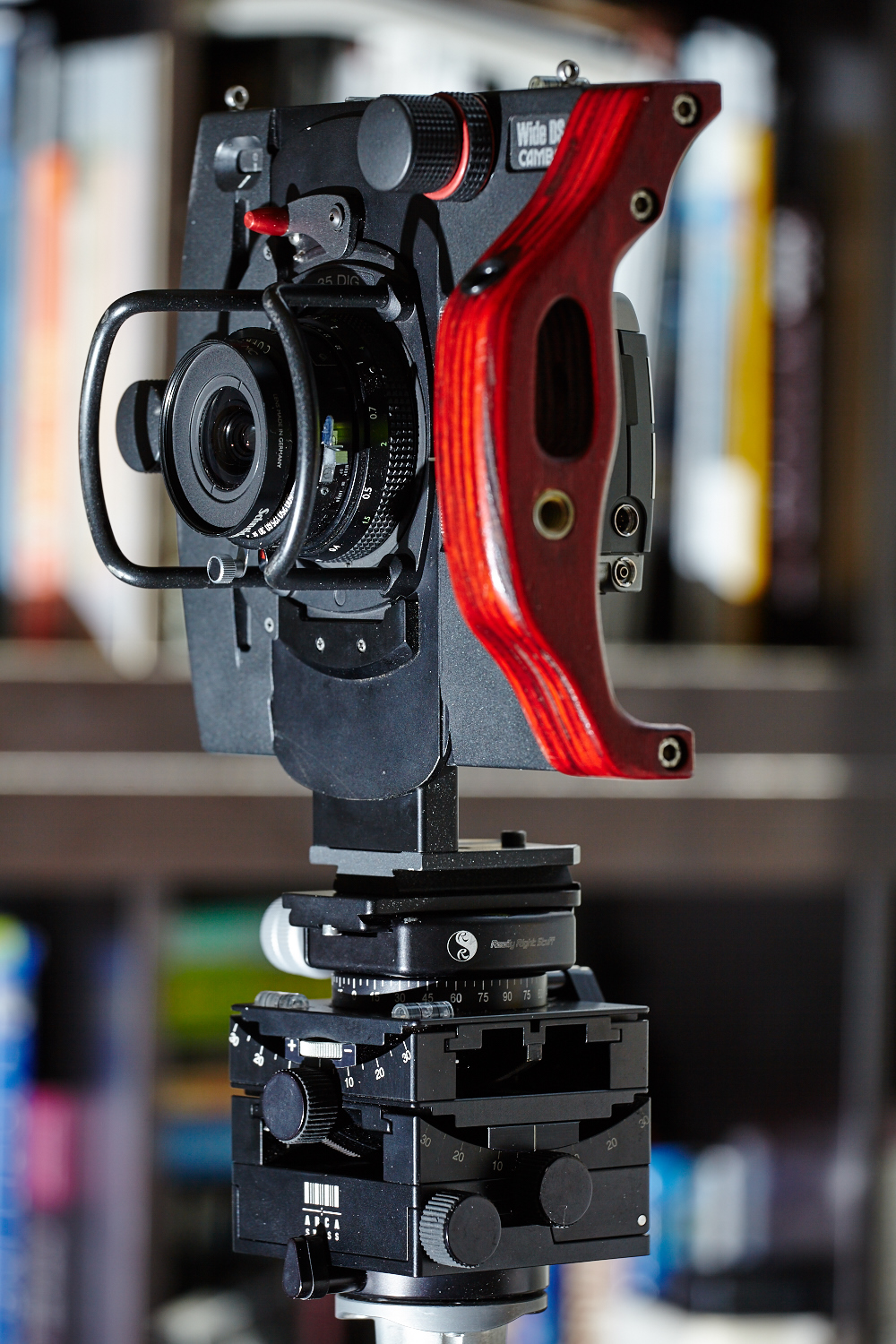
This is a Cambo technical camera, with a medium format digital back made by Phase One. If you've been
around the photography world for awhile, you'll recognize this as the direct descendent of what
used to be one of the standard tools for architectural photography: the 4x5 view camera.
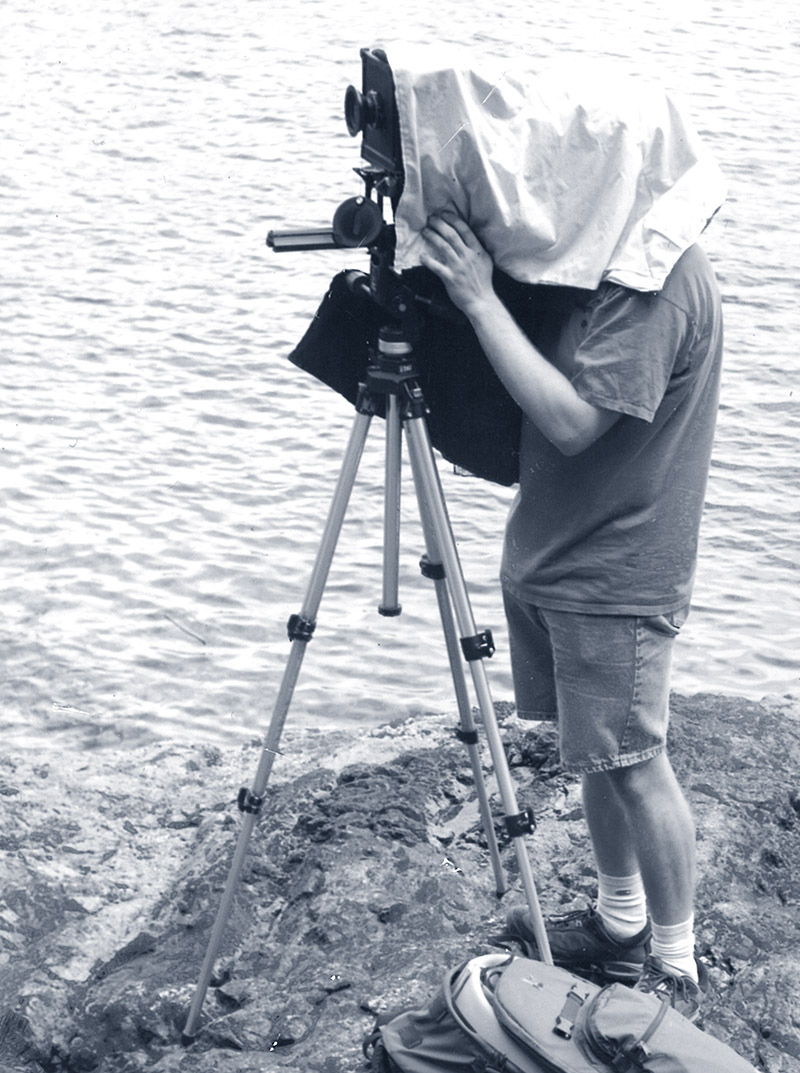
© of Mark Knowles Photography
Yes, that's a younger me underneath that darkcloth making use of one, and yes, I still own and
maintain that setup though it's largely collecting dust. I did end up pulling it out a few years
back for a project for Iredale Group Architecture, and then again for a workshop at Vancouver Photo Workshops.
It produces lovely images, and if you want me to use it on your project, just ask -but be willing
to wait a lot longer and pay a good chunk of extra change to cover film, development, and scanning
costs (hey, vintage goodness is pricey!). The lovely thing about the medium format digital rig is
that you get even better quality than on the 4x5, with the speed of digital. It's still big, expensive,
and cumbersome... but it's usually worth it.
So Why Use Such A Beast Of A Camera?
Get photographers together, and the talk inevitably turns to gear; but as anyone on a
construction site knows, the equipment is there ideally to support one's ability to do
Really Excellent Work. For architectural photography, medium format digital is one of
the current best tools for the job as far as giving you high resolution, amazing dynamic
range, the most flexibility to use your images, and a particular lack of distortion
that you'd get working in smaller formats.
Dynamic Range
Dynamic range is all about maintaining detail in both the light and dark areas of an image,
where the brights are really bright and the darks are really dark. This situation happens a lot,
particularly when photographing daylit interiors. Our eyes and brains have a much greater dynamic
range than any camera, which means that if you've tried to shoot an interior with a daylight view,
you've probably gotten an unhappy compromise like the top image, when you really wanted
something that looks like the bottom:
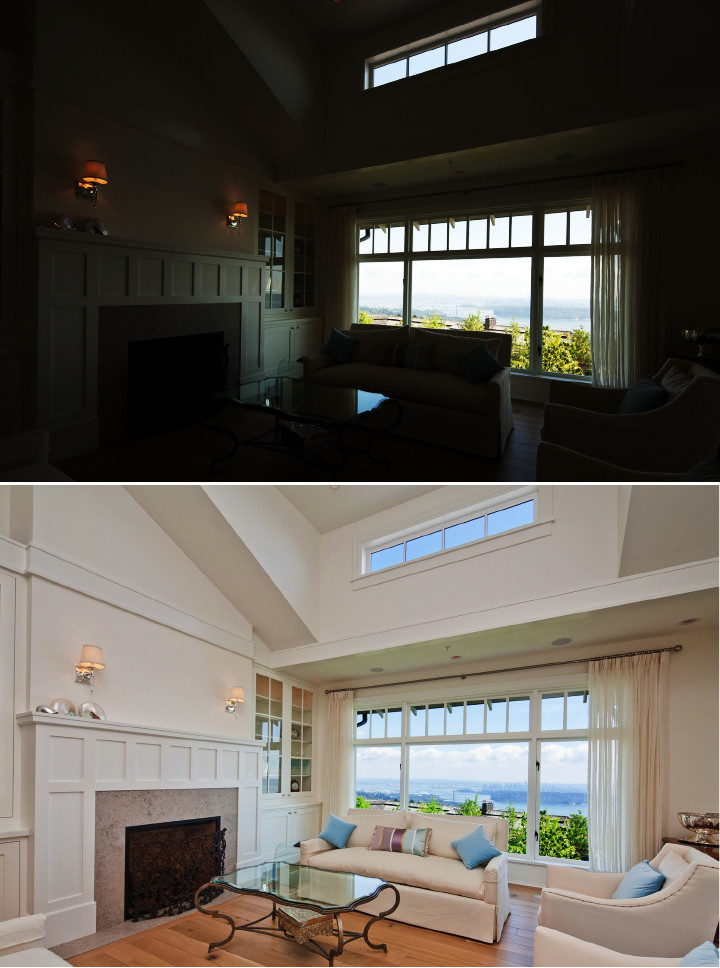
© of Mark Knowles Photography
There are a half dozen or more ways to deal with this problem, and we use just about all of them.
However, often the best way is to start with better materials: namely, a camera that gives you
more dynamic range to begin with. In a couple of shots, you've captured what you need and can
work with it to pull out the detail you need. We recently photographed this stunning modern
beauty for Kerr Construction, and it featured an entryway with a piece of stained glass that,
in bright light, lights up the architectural concrete floor:
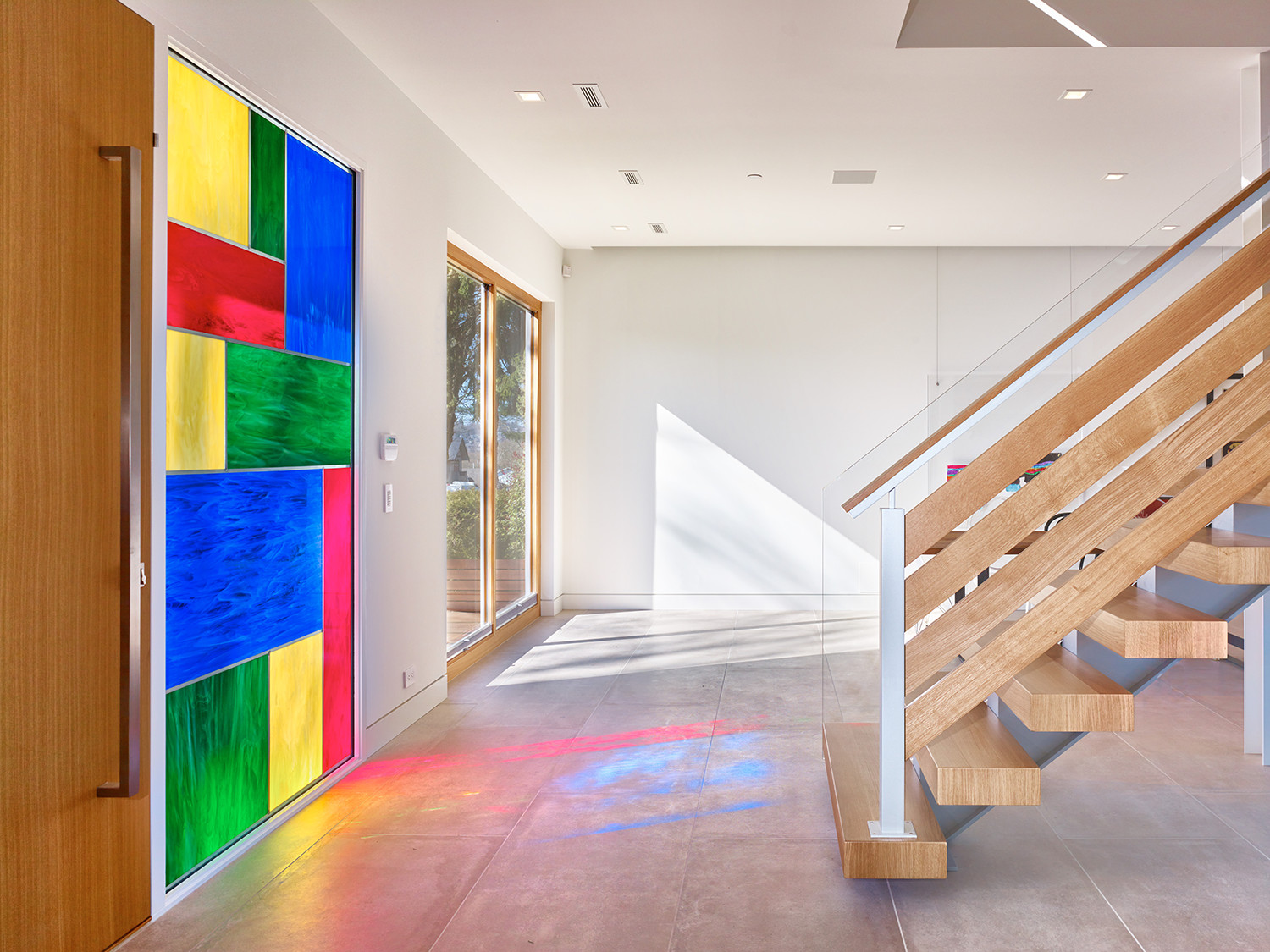
© of Mark Knowles Photography
This is a tough shot to pull off because the bright colours of the window and the subtle colour
detail on the floor, both so important to the project, don't photograph as well in any other
medium; and here, they captured beautifully and realistically.
Extending Twilight
We love twilight exteriors and interiors, and we bet you do too. From a photographer's point
of view, one of the big problems with twilight is that it doesn't stick around very long.
In summer, it's a lovely almost full hour of gorgeous light, during which we can run around and
get fine photos. But in winter, twilight lasts for nary more than a few minutes at best.
Medium format digital is great at pulling colour and detail out of dark areas, like dark skies
at the end of twilight. This sky was almost black to the unaided eye when we photographed it,
but the camera happily pulled in the detail we needed to make the shot work:
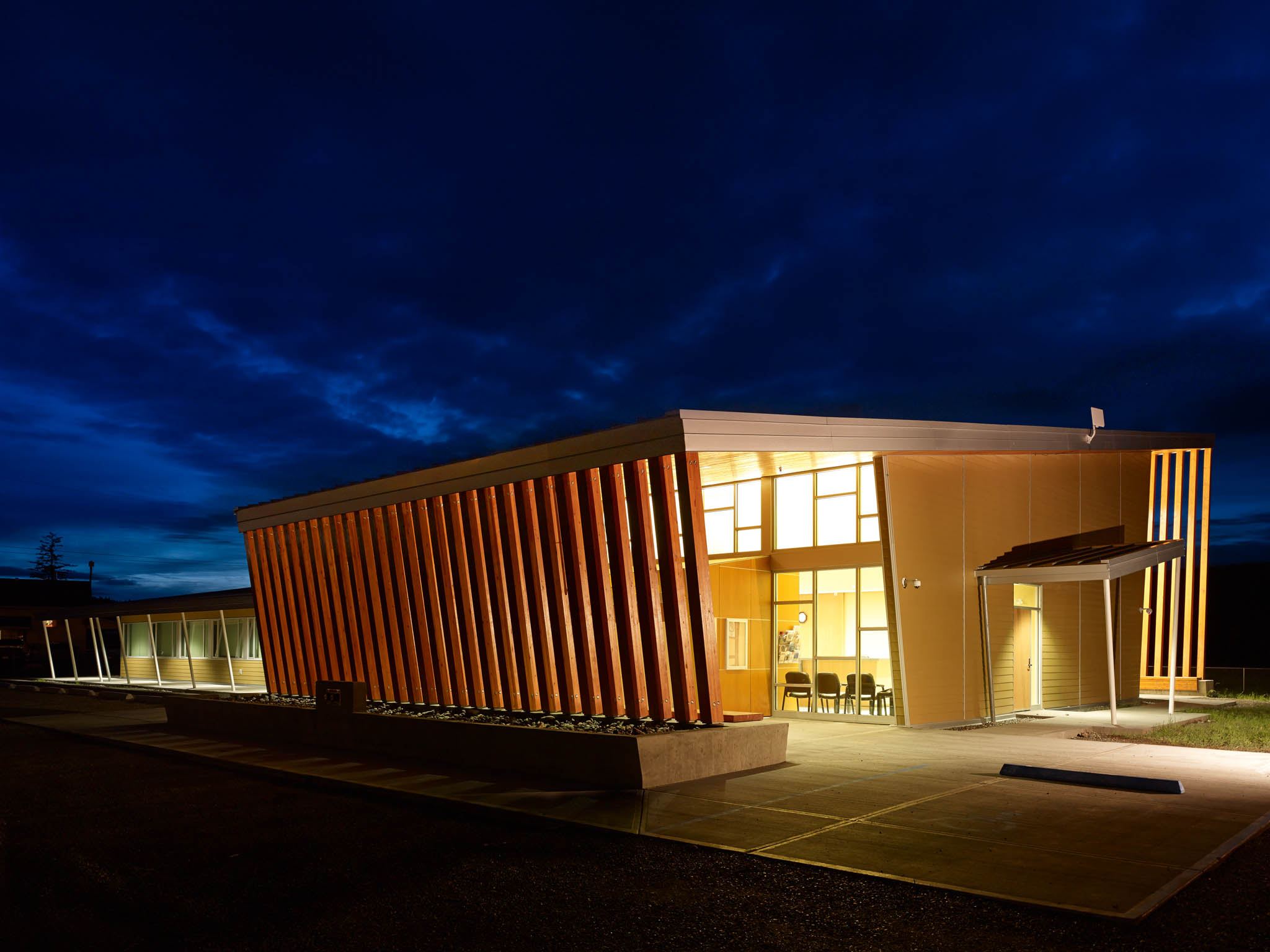
© of Mark Knowles Photography
Perspective
The medium format digital rig, as a good camera for architectural photography should, has the
ability to shift the lens so you can look up or down while keeping verticals vertical -and if
you're running a one-point perspective, keeping your horizontals horizontal. But there's also
something more subtle going on here.
You've probably had the experience of seeing the final images of an interior (particularly in
inexpensive real estate photography, a genre in which this is usually considered a feature)
and exclaimed "Wow! That tiny bathroom looks as big as BC Place!"; and then later on, someone
who experienced your project from photos first probably said "Wow! That big bathroom is actually
pretty tiny!" That's wide angle distortion (or if you want to impress your friends at cocktail
parties, volume anamorphosis), and it's a particular bane in very large and very small spaces.
On a medium format digital camera, there's a lot less of it because the sensor is larger and
the focal length of the lens can be longer, which means you get a "flatter" look. It's still
present, but it doesn't jump out at you in the same way as it does in smaller formats. Look here:
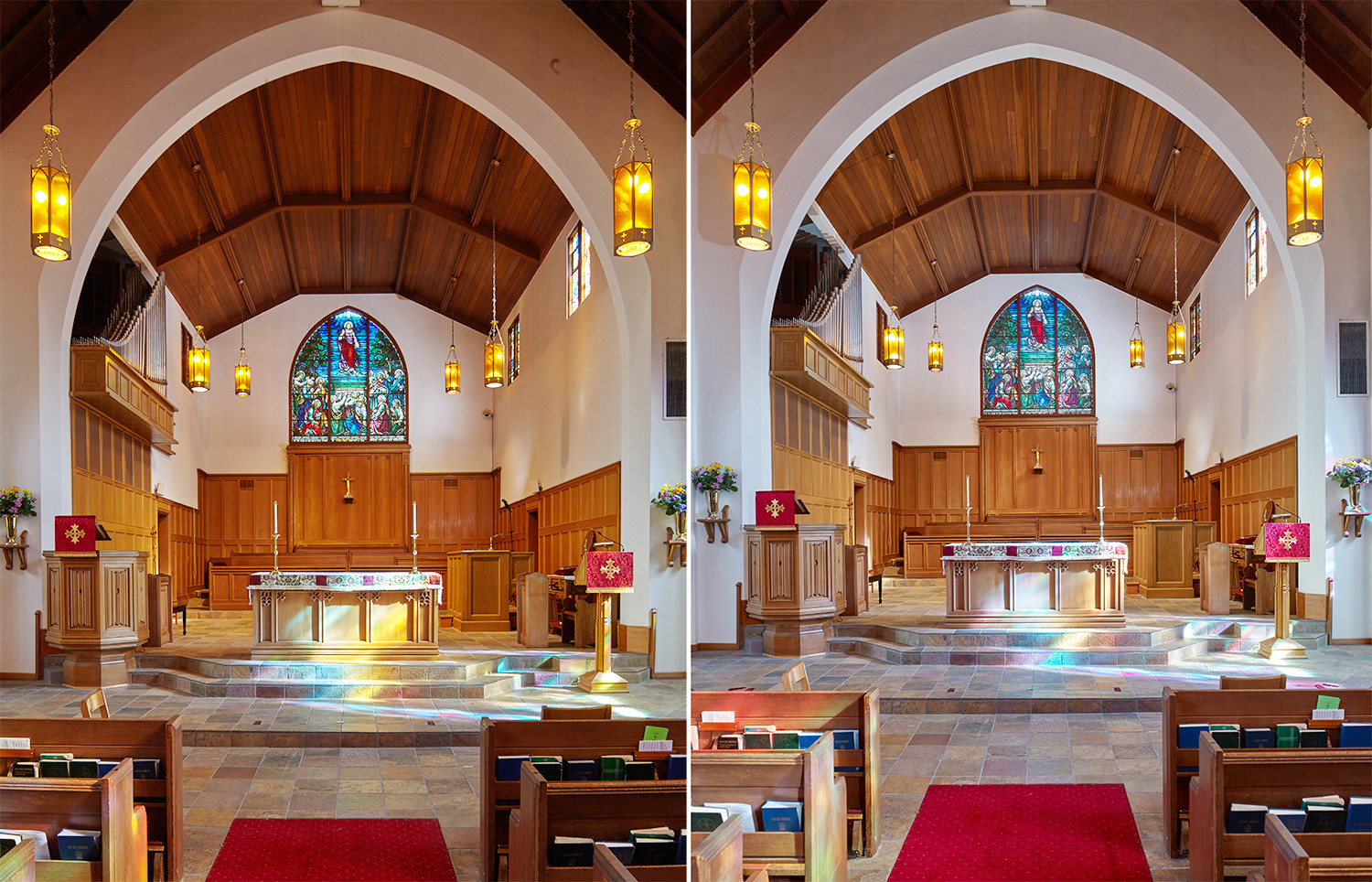
© of Mark Knowles Photography
These two images were taken at the same position a few minutes apart, and are unretouched except
for cropping and matching the colour temperature between them. The image on the left is off my
full-frame Canon 5D Mk II, and the one right is medium format digital. It's subtle, but you'll
notice that the one on the right looks less stretched. You'll also notice, once again, the extra
detail on the ceiling wood and the stained glass light on the floor.
Flexibility
One of the great things about having lots of resolution and lots of detail is the ability to
crop your images for various uses and pull more photos out of a single image. Let's take this patio,
renovated by Rembrandt Renovations last year, and see this in action:
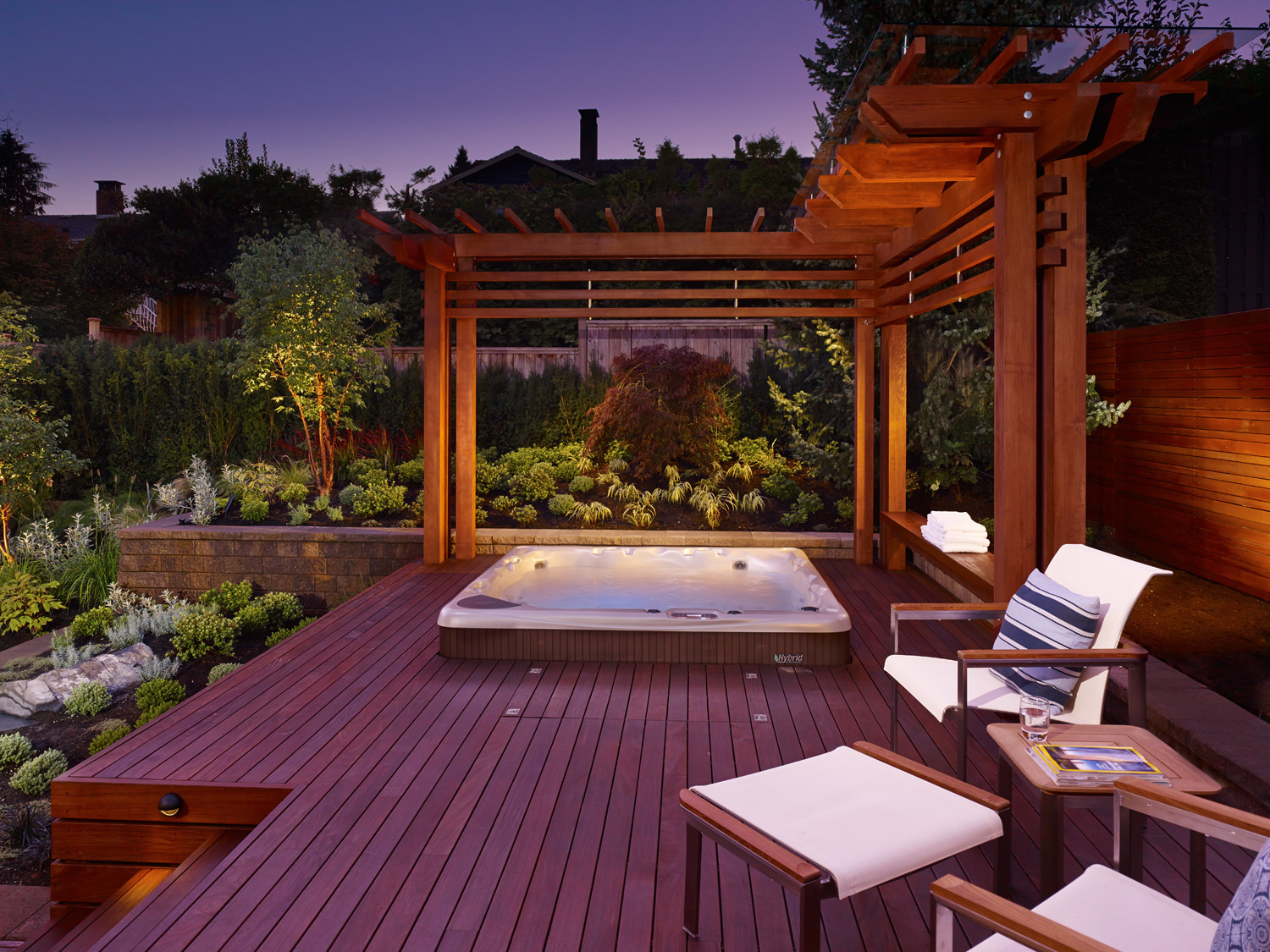
© of Mark Knowles Photography
The builder of this project was justifiably proud of the woodwork on the pergola.
So, let's take a crop of just the pergola and see what we see:
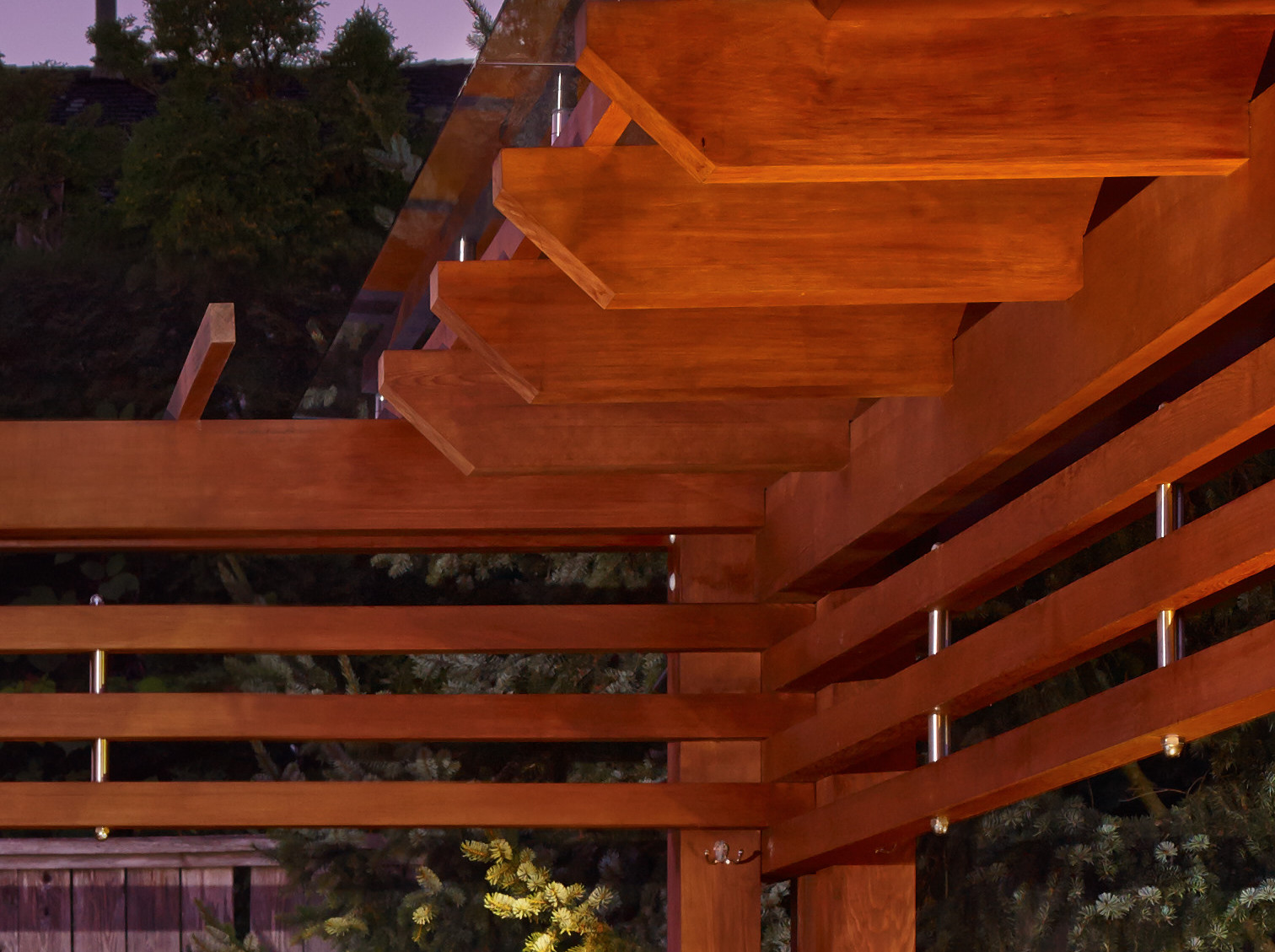
© of Mark Knowles Photography
And there we go, the pergola... in all its lovely wooden detail.
Getting the advantage
That's the easy part: call us, and you get all the wonderful advantages of this format
as part of the photos we deliver, without the five-figure-plus investment required to buy,
maintain, and run all the specialized equipment. You'll get images that are cleaner, closer
to the reality of being there, and give you more flexibility across your various marketing
channels. Since it's technically demanding, it does mean that things sometimes take a little
longer to shoot on location, but the results, as you can see, speak for themselves.
You're getting more value from your project photography, as well as a look you can't get
elsewhere in town. We're also one of the few (if not only) local photographers to be using
this gear on the majority of our projects, so you'll get work that definitely stands out
from the pack, just like you!"
Thanks Martin for above words, we're pleased you appreciate working with the Cambo Wide camera system.
If there are any further questions about Cambo, lenses, choosing a Wide camera system or digital back
you are welcome to contact a Cambo reseller or ask through info@cambo.com
Click here for more information on Cambo Wide architectural cameras.
Click here for more from Martin Knowles' Blog and Web.








